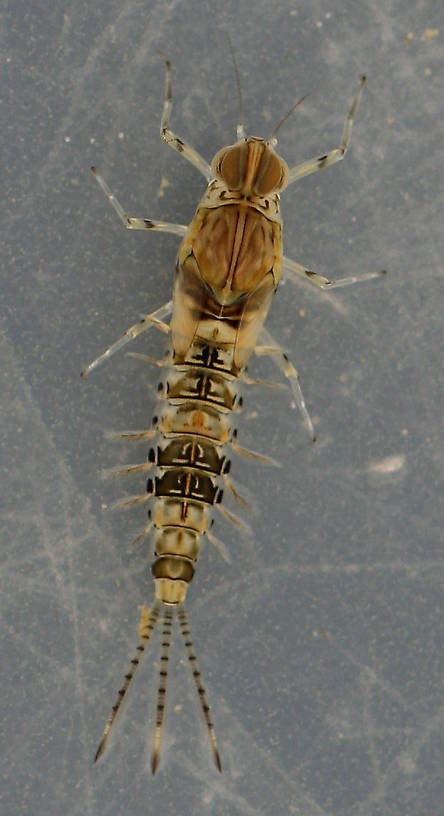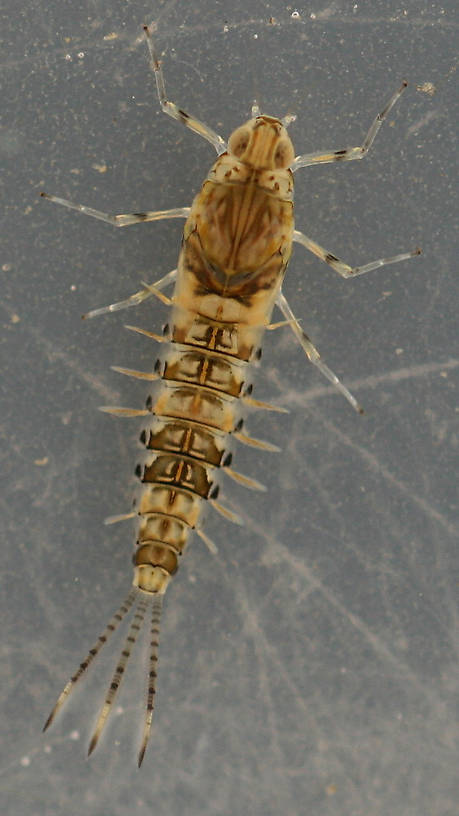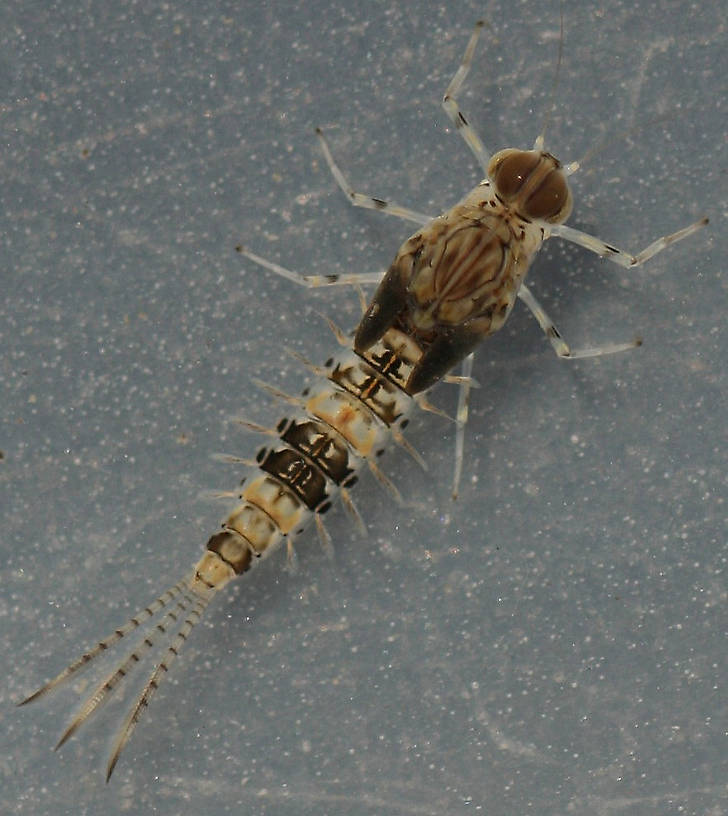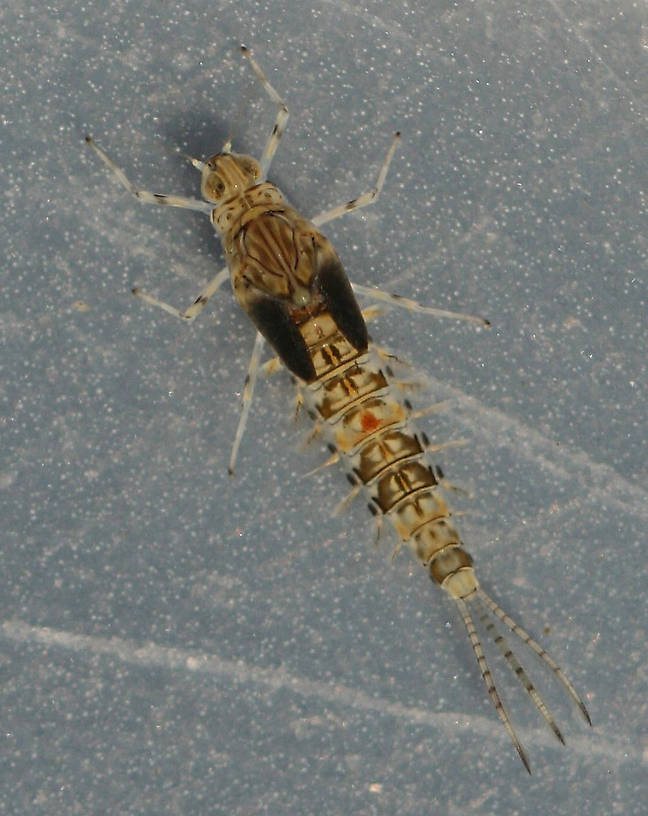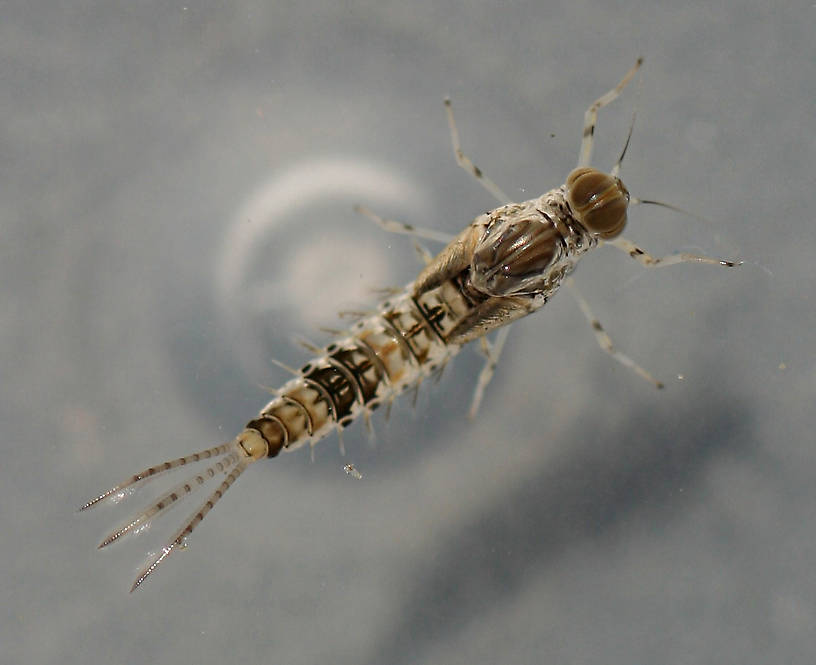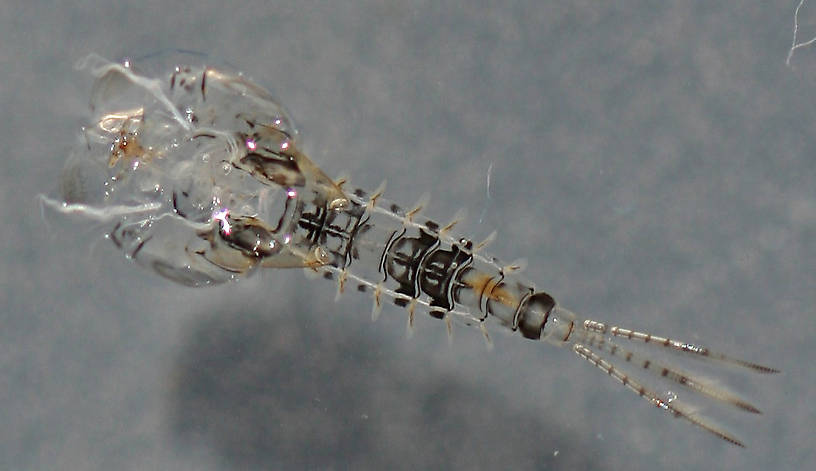Blog & Latest Updates
Fly Fishing Articles
Insects by Common Name


> > Anafroptilum bifurcatum nymphs (formerly Centroptilum bifurcatum)
| Millcreek | July 24th, 2014, 12:40 am | |
| Healdsburg, CA Posts: 356 | Thought some folks might be interested in these photos of Anafroptilum bifurcatum nymphs. They're abundant in the Russian River from mid March until mid June and again from mid July until September. They're usually found in slow water along the edges of glides and riffles. Subimagines usually emerge from early afternoon until early evening. Adults usually show up in the late afternoon or early evening. males congregate in swarms along the edge of gravel bars and females are usually seen flying over fast glides or riffles laying eggs. Mature nymphs are 5-6 mm long (not including cerci). | |
| Konchu | July 24th, 2014, 10:24 pm | |
Site Editor IndianaPosts: 505 | INcredibly nice pictures; thanks! | |
| Millcreek | July 25th, 2014, 11:09 am | |
| Healdsburg, CA Posts: 356 | Luke - Glad you enjoyed the pictures. I like these little animals but it's always a challenge to get a good photo of them between their size and their tendency to move just about the time you get the focus zeroed in. Mark | |
| Entoman | July 27th, 2014, 11:27 am | |
| Northern CA & ID Posts: 2604 | Great pictures, Mark. They look like miniature versions of Ameletus nymphs. I've had good luck with little Sawyer PT's using mallard flank touched up with a marker instead of pheasant tail barbules. The Oliver Edwards style of baetid nymph works great too. On Fall River they can be pretty effective from mid Summer on. | |
| "It's not that I find fishing so important, it's just that I find all other endeavors of Man equally unimportant... And not nearly as much fun!" Robert Traver, Anatomy of a Fisherman | ||
| Millcreek | July 28th, 2014, 7:40 pm | |
| Healdsburg, CA Posts: 356 | Kurt - Yeah, they do look like miniature versions of Ameletus. Or at least have some of the same mannerisms and elegant coloration. Always amazes me how the colors don't really show until you get a photo or look at them under a microscope (or maybe they do if you have better eyes than mine). When I get them in the field they look like little camouflaged specks at first, especially when they're sitting on some sand or gravel. Usually takes me a second to figure what I've got, but those banded cerci give them away pretty quickly. | |
Quick Reply
You have to be logged in to post on the forum. It's this easy:
Related Discussions
| Title | Replies | Last Reply |
| Suwallia sp. In the Photography Board by Millcreek | 0 | |
| More Baetis nymphs (2 more) In the Identify This! Board by Millcreek | 0 | |
| Paraleptophlebia sp. (2 more) In the Photography Board by Millcreek | 0 | |
| Re: Ephemerella maculata (1 more) In the Photography Board by Millcreek | 3 | Apr 12, 2015 by PaulRoberts |
| Siphlonurus sp. In the Identify This! Board by Millcreek | 0 | |
| Re: Serratella micheneri nymphs In the Photography Board by Millcreek | 2 | Oct 13, 2014 by Millcreek |
| Chloroperlidae In Sweltsa Stonefly Nymph by Earlfishman | 0 | |
| Re: Ameletus and Paraleptophlebia In the Photography Board by Millcreek | 8 | Jun 4, 2016 by Hansolo |
| Re: Drunella coloradensis / flavilinea (5 more) In the Identify This! Board by Millcreek | 9 | Jul 22, 2014 by Crepuscular |
| Re: untitled In the Identify This! Board by Redacted | 1 | Feb 15, 2011 by Redacted |
Troutnut.com is copyright © 2004-2024 Jason
Neuswanger (email Jason). See my FAQ for information about use of my images.
 privacy policy
privacy policy

